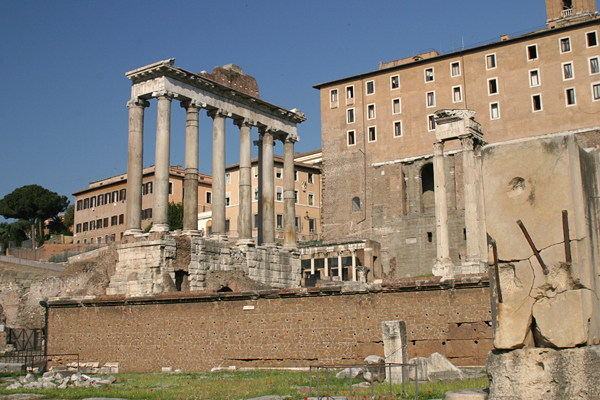

The Rostra was the platform from which orators spoke to the assembled people, its name taken from the bronze ships' beaks that decorated the front (the first were from the victory at Antium in 338 BC), their supporting vertical slots and large dowel holes still to be seen. Planned by Caesar but given its final form by Augustus in 42 BC, what now is visible of the Rostra is an early twentieth-century restoration. It was here that Antony delivered his funeral speech for Caesar, and here that the Triumvirs proscribed Cicero and other political foes.
When Diocletian visited Rome for the first time in AD 303 to celebrate the twentieth year (vicennalia) of his reign and the tenth year (decennalia) of the Tetrarchy, five honorary columns were erected behind the Rostra: a taller one in the middle, carrying a statue of Jupiter (the patron god of Diocletian), the others, the Augusti and Caesars. Only one of the decorated column bases, possibly that of Constantius, the father of Constantine, survives.
Two marble reliefs (Anaglypha), which were found nearby, may have surmounted the Rostra as a balustrade or served as a parapet (plutei). The heads of the principal figures are missing, but it is likely that they date from the time of Hadrian, and commemorate both the social programs of his adoptive father, Trajan, and their continuation with Hadrian's own cancellation of public debt.
At the north end was the Umbilicus Romae (Navel of Rome), which represented the official center of Rome and the Roman world. At the other end was the Milliarium Aureum (Golden Milestone), erected by Augustus in 20 BC, when he was superintendent of the empire's road system. Sheathed in gilded bronze, the monument was in the form of a Roman milestone and regarded as the point where all the roads leading to Rome converged. On it, the major cities of the empire and their distance from the city are said to have been inscribed.